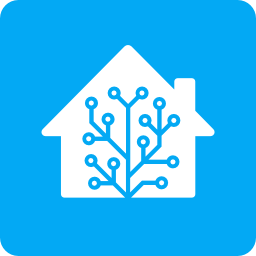How do you guys run home assistant?
I tried out home assistant using virtual box on my main pc and I enjoyed what I could do with it so far. So, I ordered a mini pc (https://www.amazon.com/dp/B0C89TQ1YF/) with the intention of running home assistant’s OS so that it’s always running regardless of Windows doing what it wants with my PC.
I run other things all the time on my main pc too, plex, isponsorblocktv, tartube, things like that. Is running just home assistant on that mini pc going to be overkill? Should I just put Linux on it and run home assistant on there some other way so that I can also run some of these other things there? Will home assistant take a noticeable performance hit?
Edit: For anyone curious, I installed Linux mint and run home assistant in virtualbox on there. I’m not experiencing any issues. I moved isponsorblocktv to the mini pc, and added the mini pc as a server to my plex. It doesn’t have enough space for me to comfortably move plex entirely off my main pc. With plex limiting remote play to plex pass I’m probably going to just use jellyfin which i already had setup on my main pc. At some point maybe I’ll add an external hard drive and run jellyfin on the mini pc instead. I’ve done this for a short while and Windows has already restarted my main PC of it’s own free will, so 👍
I personally run it on a MiniPC that runs proxmox. You could run other stuff on it through proxmox as well. I would definitely recommend running always on server stuff on something other than your main daily PC.
You could probably run all the other stuff on there as well, although transcoding might slow things down a bit. HA itself should be fine as once you’ve set up all your automations it’s not like you need to interact with it directly and you’ll just get a little bit of lag at worst.
I have a “server” cobbled together out of old PC parts. I have proxmox running on it and Home Assistant is one of the VMs running on that machine.
Ah, great choice! I use the same model for my NAS. Anyway the N100 is really powerful for this task, and should have enough spare power to allow experimentation with different addons. Plex likes the intel chip and uses it for transcoding, if you want to do that.
I run it on a Raspberry Pi 4 (I happened to have a spare one, also BUY EUROPEAN and all that). There’s a dedicated image for it.
RasPi 4B with the dedicated HassOS distro.
Installation was easy. Upgrades run regularly and very stable.
This, but with the asterisk of Bluetooth sometimes not recovering gracefully from soft updates
I’m currently running mine on a spare Raspberry Pi 4, but the fan on it is kind of loud, so I’m considering getting myself one of those home assistant green machines.
I’ve got a Lenovo m910q in my basement with home assistant running on docker. (Also on that machine is an overly large set of docker images doing other stuff. I wish I knew enough about docker compose when I set up home assistant, because that’s the only server that will cause a bit of pain if it fails and I need to resurrect it. (I’ll do it right next time… )
Partial list of services that PC has: home assistant, adguard, swag (reverse proxy), *arr stack(downloading files), calibre(book housing), jellyfin(movie and TV streaming), mealie(recipe management), habatica(habit fixing tool), homepage (to manage all the links and ports), and a 3 user Minecraft server. I only notice things going wrong when watching a movie AND playing Minecraft.
I tried setting up orcaslicer, but so far I hate it. (Hosted, it’s not a pleasant experience)
Pretty much and cheap minipc will do. A very power efficient N100 is more than enough, and probably cheaper than a Pi board now.
I have mine on a rPi 3b+, in a docker container. Works great
On a Pi4.
I was running it on a VM on the home server but then any downtimes that machine had were also HA downtimes. Decided that mattered enough to run it on it’s own hardware.
Also Pi4, with a RaspBee Zigbee thingy on the io. I think 0 unplanned downtime so far after a year and a half on that device
Got no home assistant for now but plan to do it. I am running jellyfin, nextcloud, traccar and immich on Beelink s12 pro. But technically you can run all that on any other brand which sells n100 minis. This machin is like 12w under load! Magical! Also can do 4k video easy. Besides all my services, I use it as HTPC under my TV.
I have an Intel NUC (3rd gen I think) which runs Proxmox, which runs several VMs including Home Assistant on HAOS. The only thing I did was upgrade the RAM as the VMs eat this quickly…
Other services I run on this small box are AdGuard, Paperless-ngx, KitchenOwl, tt-rss and two Nightscout instances.
HA Supervised running under Debian 12 on a mini laptop with an N200 processor takes about 3% CPU. With the Frigate NVR add-on running 2 security cameras it uses about 10%.
I had it on a old pc, running in a virtual machine alongside other stuff, but switched to running it as HAOS on its own mini pc. Just felt simpler.
The house has to work damn near 100% of the time, so I run it on a dedicated Raspberry Pi 4 that has Home Assistant OS with the full stack on it. Works great!
Yeah or you sleep on the couch…😆 Joke aside. Yes I also run it on a dedicated device. I use one of those dell micro PCs.





